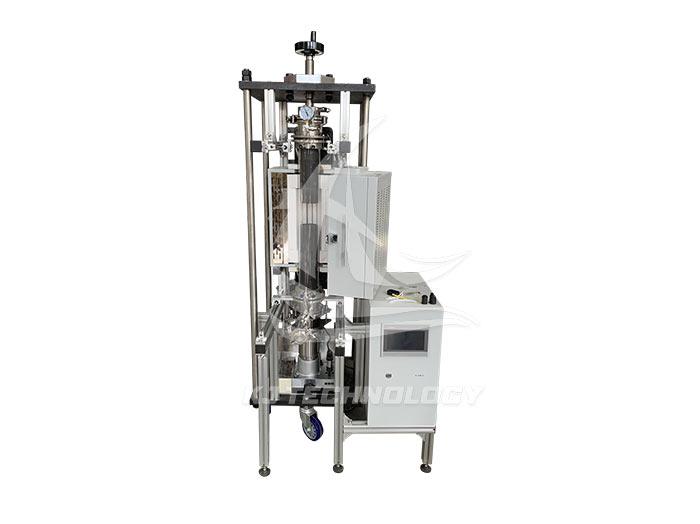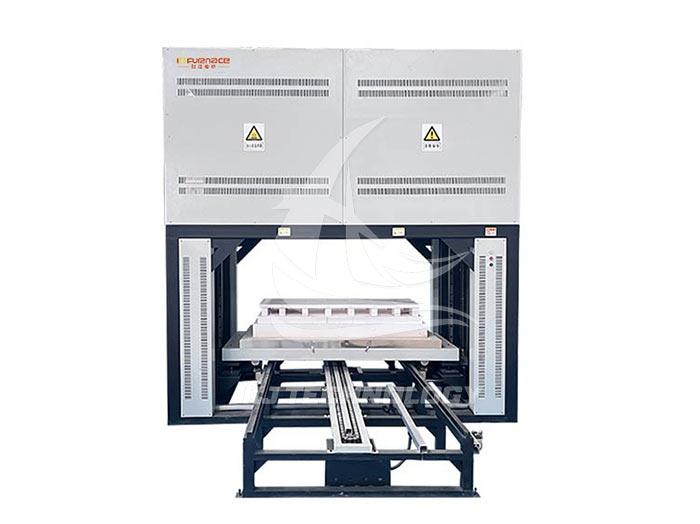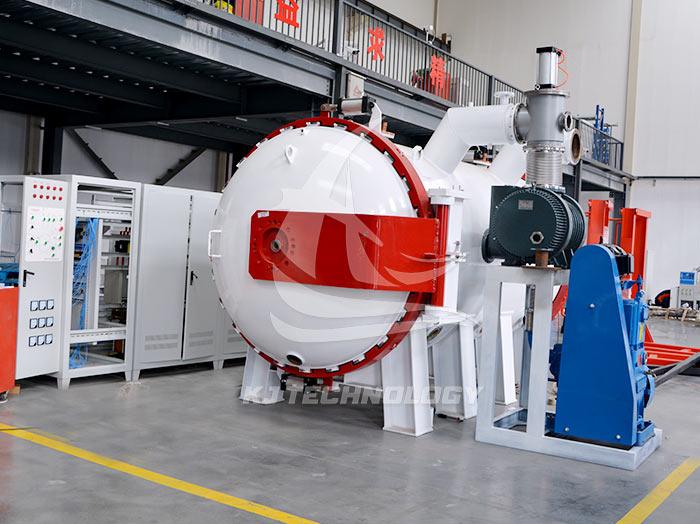Advantages of High Temperature Vacuum Brazing Furnace
 11-20-2025 Author: KJ technology
11-20-2025 Author: KJ technology
The high-temperature vacuum brazing furnace achieves high-quality connection of metal materials by creating an oxygen free and controllable high-temperature environment. Its advantages can be summarized as four core advantages: superior process performance, wide material adaptability, environmental protection and energy saving, and high production efficiency. The specific advantages are as follows:
1. Superior process performance: achieving precise and defect free connections
Non oxidizing welding environment
Principle: A vacuum environment (with a vacuum degree of up to 10-4Pa or less) isolates oxygen and prevents metal oxidation at high temperatures to form brittle oxide layers.
Effect: The surface of the welded joint is smooth, free of defects such as oxide scale and pores, and the mechanical properties (such as tensile strength and fatigue life) are significantly improved. For example, after vacuum brazing, the joint strength of aircraft engine turbine blades is higher.
Uniform thermal field control
Technology: Using graphite heating elements and multi-layer insulation screen design, combined with PID temperature control system, to achieve temperature uniformity within ± 5 ℃.
Advantages: Eliminating welding thermal stress, avoiding workpiece deformation, especially suitable for precision welding of thin-walled and complex structural components. For example, in semiconductor sensor packaging, vacuum brazing can ensure the positioning accuracy of small components.
Low residual stress
Mechanism: Under vacuum environment, metal atoms diffuse fully, the joint structure is uniform, and residual stress is reduced compared to traditional welding.
Application: In the welding of medical devices (such as titanium alloy implants), low stress joints can reduce biocompatibility risks and extend service life.
2. Wide material adaptability: breaking through the difficulty of welding dissimilar metals
Compatible with multiple material systems
Scope: Can weld materials such as aluminum, copper, nickel, stainless steel, high-temperature alloys, ceramics, diamonds, etc., especially skilled in connecting dissimilar metals.
Case: Vacuum brazing of aluminum and copper in automotive heat exchangers solves the problem of electrochemical corrosion and improves thermal conductivity efficiency.
Advantages of high-temperature alloy welding
Difficulty: High temperature alloys (such as Inconel 718) contain elements such as nickel and cobalt, are prone to oxidation, and have large differences in thermal expansion coefficients.
Solution: Vacuum brazing achieves uniform fusion of the alloy and higher high-temperature strength of the joint by precisely controlling the temperature curve (such as segmented heating to 1260 ℃).
Ceramic metal connection
Technology: Using active brazing materials (such as Ag Cu Ti) to achieve metallurgical bonding between ceramics and metals under vacuum.
Application: In electronic packaging, vacuum brazing of Al ₂ O ∝ ceramics and Kovar alloys improves the matching of thermal expansion coefficients and significantly enhances reliability.
3. Environmental protection and energy conservation: in line with the trend of green manufacturing
Non polluting emissions
Comparison: Traditional flame brazing requires the use of fluxes such as fluoride and borate, which produce harmful gases; Vacuum brazing does not require soldering flux, and there is no exhaust gas or wastewater discharge throughout the process.
Certification: Compliant with environmental standards, suitable for high cleanliness fields such as medical devices and food packaging.
Low energy design
Thermal insulation technology: Multi layer graphite felt insulation screen reduces heat loss and is more energy-efficient than air furnaces.
Rapid heating: High power density heating elements accelerate the heating rate and shorten the production cycle.
waste heat recovery
System: Some high-end models are equipped with heat exchangers to recover waste heat from cooling water for preheating workpieces, reducing overall energy consumption.
4. High production efficiency: meeting the needs of large-scale manufacturing
Automated Integration
Configuration: It can be equipped with a robotic arm and a visual inspection system to achieve automatic workpiece clamping and real-time monitoring of welding parameters.
Case: In the production line of automobile radiators, the vacuum brazing furnace is linked with the automated loading and unloading system, resulting in higher single line production capacity.
Multi station design
Structure: Adopting a dual chamber or triple chamber structure (such as heating chamber, cooling chamber, and loading chamber) to achieve parallel operation of "heating cooling loading".
Effect: Improved equipment utilization and doubled efficiency compared to single chamber furnaces.
Quick Changeover
Modularization: Key components such as heating chambers and vacuum systems adopt quick change design, which shortens the changeover time.
Application: In multi variety and small batch production (such as aerospace components), welding processes for different materials can be quickly switched.








